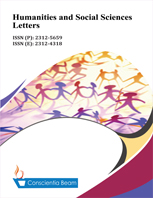Empowerment of Women Through Budgets: Indian Experience
Abstract
If money has the power to make things happen Budget has the potential to mend the socio economic structure of a society. This notion had provided necessary impetus to the concept of Gender Responsive Budgeting (GRB) to gain currency as an international tool for empowering women so as to progress towards the ultimate goal of Gender equity. This paper attempts to gauge the performance of GRB in India as a tool for Gender Equity using three parameters : 1) Extent of adoption measured in terms of no. of demands in Gender Budget Statements, (2)Degree of Gender Responsiveness of Indian budget as measured by financial commitments towards women empowerment ,3) Govt. seriousness towards implementation of women issues measured in terms of difference between budget estimates (BE) and Revised estimates (RE). This paper reveals that GRB is now in vogue in India through two prime strategies of Gender budget statement (GBS) and Gender budget cells (GBC’s) .This paper also finds out that decrease in Expenditure under part A of Gender budget statement as percentage of total budget Expenditure over the period of time indicates that we are heading towards the paradox of gender budgeting wherein on one hand we are showing increasing sensitiveness towards the women issues while on other hand in percentage terms we are earmarking lesser and lesser from national coffer towards such policies and actions. Further continuing positive gap between budget estimates and revised estimates shows lack of commitment on the part of Govt. to make stipulated expenditures that might stifle motive of gender budgeting . As such there is need to embolden our women oriented policies and programmes by adequate financial commitments and allocations in GRB statement (both under Part A and B ) need to be increased with special emphasis on expenditure under Part A which is specifically for women empowerment . "Gender equality does not imply that all women and men must be the same. Instead, it entails equipping both with equal access to capabilities; so that they have the freedom to choose opportunities that improve their lives. It means that women have equal access to resources and rights as men, and vice versa". (Asia Asia Pacific Human Development Report, 2010).

